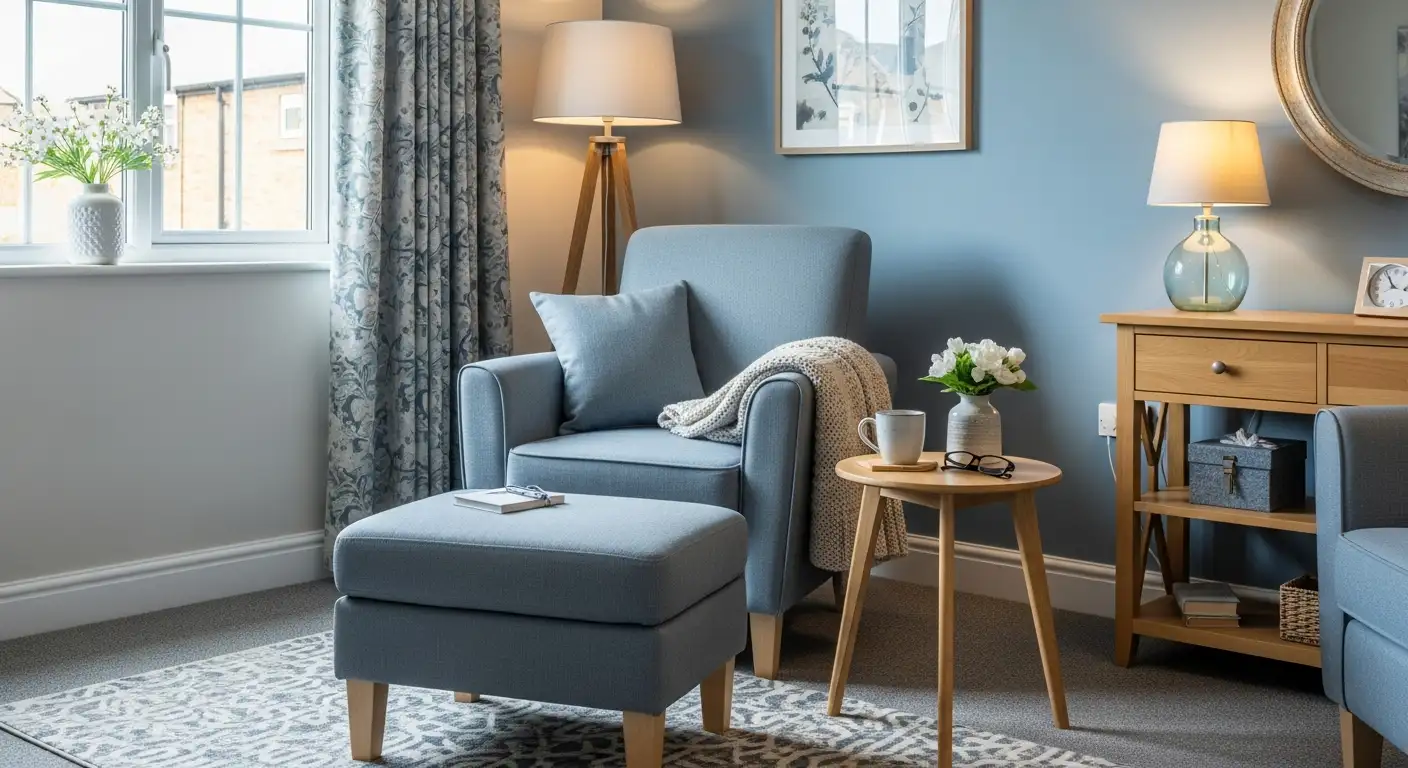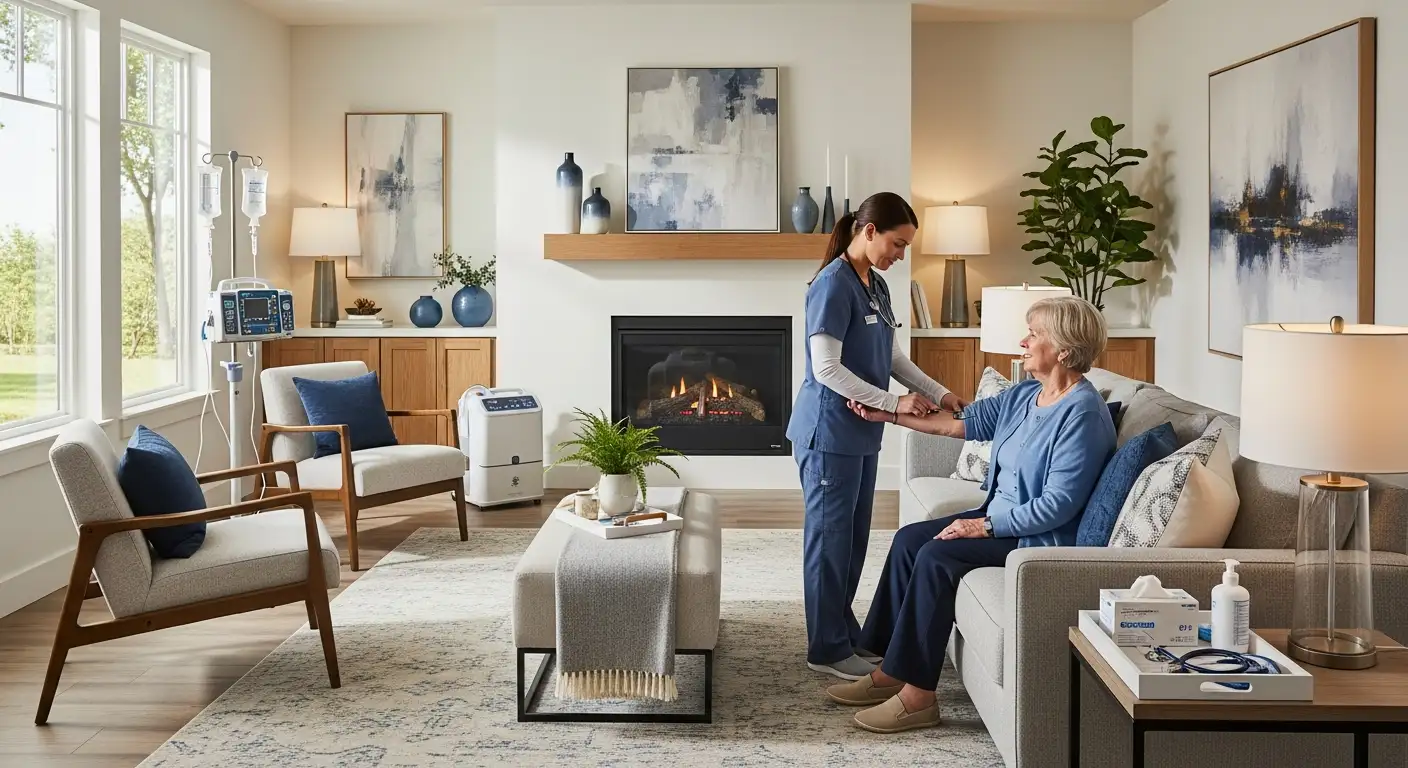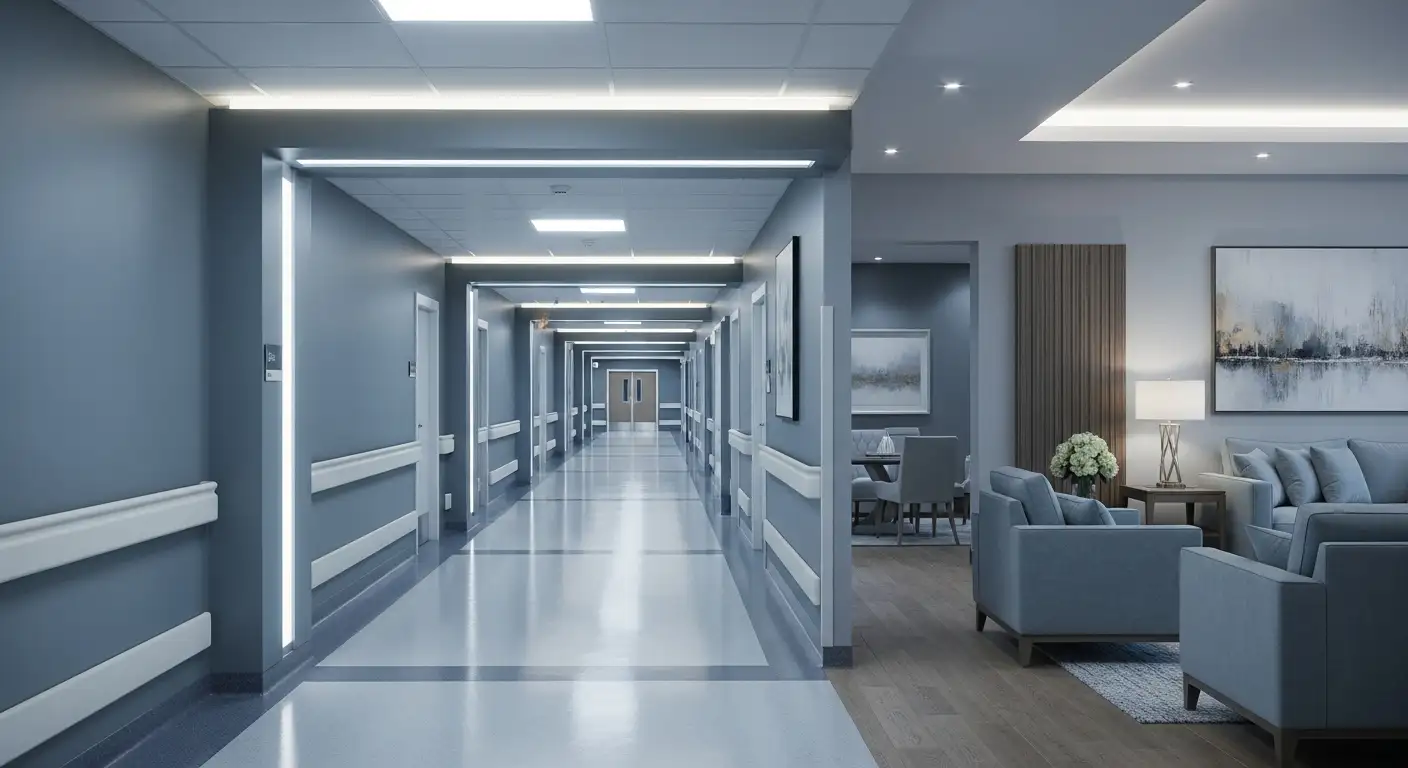Understanding the Risks of Falls in Older Adults
Falls can have a significant impact on the well-being and independence of older adults. Understanding the consequences of falls and the common causes can help in developing effective strategies for prevention.

The Impact and Consequences of Falls
Falls can lead to various physical, emotional, and social consequences for older adults. Some of the common impacts include:
- Injuries: Falls can result in injuries such as fractures, sprains, bruises, and head traumas. These injuries can range from minor to severe, requiring medical attention and potentially leading to long-term complications.
- Loss of Independence: When older adults experience falls and injuries, they may become more dependent on others for daily activities. This can impact their quality of life and lead to feelings of frustration and loss of autonomy.
- Fear of Falling: After experiencing a fall, older adults may develop a fear of falling again. This fear can limit their mobility and participation in activities, leading to a decline in physical and social well-being.
- Reduced Social Engagement: Older adults who have fallen or fear falling may become more socially isolated. They may avoid going out or participating in social activities due to concerns about falling in public or unfamiliar environments.
By understanding the consequences of falls, older adults and their caregivers can take proactive steps to prevent falls and mitigate their impact.
Common Causes of Falls in Seniors
Several factors contribute to falls among older adults. It's important to be aware of these common causes to implement preventive measures effectively:
- Environmental Hazards: Hazards in the living environment, such as slippery floors, loose rugs, poor lighting, and cluttered pathways, increase the risk of falls. Regularly assessing and removing these hazards is essential for preventing falls at home.
- Balance and Gait Issues: Age-related changes in balance, coordination, and muscle strength can make older adults more susceptible to falls. Balance exercises tailored for seniors can help improve stability and reduce the risk of falls.
- Medication Side Effects: Certain medications can cause dizziness, drowsiness, or loss of balance, increasing the risk of falls. Regular medication review with a healthcare professional is crucial to identify and address any potential side effects.
- Chronic Health Conditions: Health conditions such as arthritis, diabetes, vision problems, and neurological disorders can affect mobility and increase the risk of falls. Regular health check-ups and ongoing management of these conditions are important for fall prevention.
By addressing these common causes of falls, older adults can significantly reduce their risk and maintain a safe and independent lifestyle. Implementing preventive strategies, such as creating a safe living environment and engaging in regular exercise, can help seniors stay on their feet and reduce the likelihood of falls.
Creating a Safe Living Environment
When it comes to preventing falls in older adults, creating a safe living environment is crucial. By removing hazards and improving lighting, you can significantly reduce the risk of falls in seniors.
Removing Hazards and Clutter
One of the first steps in fall prevention is to remove hazards and clutter from the living space. Seniors should have clear pathways throughout their home to move around safely. By decluttering and organizing the living areas, the risk of tripping and falling can be minimized.
Here are some key areas to focus on:
- Remove loose rugs or secure them with non-slip backing.
- Keep floors clear of electrical cords, pet toys, and other potential tripping hazards.
- Ensure that furniture is arranged in a way that allows for easy movement.
- Tuck away any items or clutter that may obstruct walkways.
By maintaining a clean and clutter-free environment, seniors can navigate their home with ease and reduce the chances of falls.
Improving Lighting and Visibility
Poor lighting can contribute to falls, especially for seniors with visual impairments. Enhancing lighting and visibility throughout the home is essential for fall prevention.
Consider the following tips:
- Install bright, energy-efficient light bulbs in all rooms, particularly in hallways, staircases, and entryways.
- Ensure that light switches are easily accessible and conveniently located.
- Use nightlights in bedrooms, bathrooms, and hallways to provide illumination during nighttime.
- Keep curtains and blinds open during the day to maximize natural light.
Proper lighting not only helps seniors see potential hazards but also improves their overall sense of stability and security.
By implementing these measures to create a safe living environment, seniors can reduce the risk of falls and maintain their independence. However, it's important to remember that fall prevention should involve a comprehensive approach. This includes addressing other factors such as mobility, medications, and overall health.
Enhancing Mobility and Strength
Ensuring that seniors maintain their mobility and strength is essential for preventing falls. By incorporating regular exercise and physical activity into their routine, as well as focusing on balance and coordination exercises, seniors can improve their overall stability and reduce the risk of falls.
Regular Exercise and Physical Activity
Engaging in regular exercise and physical activity is crucial for seniors to maintain their strength, flexibility, and balance. By staying active, seniors can strengthen their muscles, improve coordination, and enhance their overall mobility.
There are various types of exercises that are beneficial for seniors, including:
- Strength training: This involves using resistance exercises, such as lifting weights or using resistance bands, to build and maintain muscle strength. Strengthening the legs, core, and upper body can contribute to improved balance and stability.
- Cardiovascular exercises: Activities like walking, swimming, or cycling help improve cardiovascular health and endurance. These exercises can also enhance overall muscle tone and increase energy levels.
- Flexibility exercises: Stretching exercises, yoga, or tai chi can improve flexibility and range of motion, making it easier for seniors to perform daily activities and maintain balance.
To ensure safety and effectiveness, seniors should consult with their healthcare provider before starting any new exercise program. They can provide guidance on the appropriate exercises and intensity levels based on individual abilities and health conditions.
Balance and Coordination Exercises
Incorporating specific exercises that focus on balance and coordination can significantly reduce the risk of falls in seniors. These exercises help improve stability, proprioception (awareness of body position), and reaction time.
Some balance and coordination exercises that can be beneficial for seniors include:
- Standing on one leg: Seniors can practice standing on one leg for a short period of time, gradually increasing the duration as they build strength and stability. This exercise helps improve balance and proprioception.
- Heel-to-toe walk: This walking exercise involves placing the heel of one foot directly in front of the toes of the other foot with each step. It challenges balance and coordination, and can be practiced indoors or outdoors.
- Tai chi: Tai chi is a gentle Chinese martial art that emphasizes slow, flowing movements and deep breathing. It has been shown to improve balance, flexibility, and overall well-being in seniors.
By incorporating regular exercise, including strength training, cardiovascular exercises, and flexibility exercises, seniors can enhance their mobility, strength, and overall physical well-being. Additionally, focusing on balance and coordination exercises can significantly reduce the risk of falls.
Assessing Medications and Health Conditions
To effectively prevent falls in older adults, it is crucial to assess their medications and overall health conditions. This involves reviewing medications regularly and consulting with healthcare professionals, as well as ensuring regular health check-ups. By paying attention to these aspects, seniors can minimize the risk of falls and maintain their well-being.
Medication Review and Consultation
Medications can contribute to falls in older adults due to side effects such as dizziness, drowsiness, or impaired balance. It is essential for seniors to have their medications reviewed periodically by a healthcare professional, such as their primary care physician or pharmacist. During these reviews, the healthcare professional can assess the potential side effects and interactions of the medications and make appropriate adjustments if needed.
To prevent falls related to medications, seniors should:
- Inform their healthcare provider about all the medications they are taking, including prescription drugs, over-the-counter medications, and supplements.
- Follow the prescribed dosage and schedule strictly.
- Be aware of the potential side effects of their medications and report any concerns to their healthcare provider promptly.
- Avoid stopping or changing medications without consulting their healthcare provider.
By regularly reviewing medications and consulting with healthcare professionals, seniors can address any potential medication-related risks and reduce the chances of falls.
Regular Health Check-ups
In addition to medication reviews, regular health check-ups are essential for preventing falls in older adults. These check-ups allow healthcare professionals to monitor seniors' overall health conditions, identify any underlying issues that may increase the risk of falls, and provide appropriate interventions or treatments.
During health check-ups, healthcare professionals may:
- Evaluate seniors' balance, gait, and mobility.
- Assess vision and hearing to identify any impairments that may contribute to falls.
- Screen for chronic conditions, such as osteoporosis or cardiovascular diseases, which can affect balance and increase fall risk.
- Review the results of any necessary laboratory tests or imaging studies.
By attending regular health check-ups, seniors can stay proactive in managing their health and addressing any potential factors that may increase the risk of falls. It is important for seniors to communicate openly with their healthcare provider and report any changes or concerns regarding their health and well-being.
Assessing medications and health conditions is a vital step in preventing falls among older adults. By staying vigilant, seeking professional guidance, and maintaining regular health check-ups, seniors can reduce their risk of falls and enjoy a safe and independent lifestyle.
Utilizing Assistive Devices
Assistive devices can play a crucial role in preventing falls among older adults. These devices provide support, stability, and help maintain balance, reducing the risk of accidents. Two commonly used assistive devices for fall prevention are canes and walking aids, as well as grab bars and handrails.
Canes and Walking Aids
Canes and walking aids are valuable tools for seniors who may have difficulty with balance or stability. These devices provide additional support while walking and can help redistribute weight, reducing the risk of falls.
When choosing a cane or walking aid, it's important to select the one that suits individual needs and preferences. There are various types available, including standard canes, quad canes, and walkers. Consulting with a healthcare professional or physical therapist can help determine the most appropriate option for your specific situation.
It's essential to ensure that the cane or walking aid is adjusted to the correct height. Improper adjustments can compromise stability and increase the risk of falls. Additionally, regular maintenance and inspection of the device are crucial to ensure its proper functioning.
Grab Bars and Handrails
Grab bars and handrails are essential safety features that can be installed in various areas of the home to provide support and stability. These devices are particularly useful in areas where falls are more likely to occur, such as bathrooms, stairways, and hallways.
When installing grab bars and handrails, it's important to ensure they are securely mounted to the wall or floor to provide reliable support. The installation should be done by a professional or someone experienced in home modifications to ensure proper placement and stability.
In the bathroom, grab bars should be installed near the toilet and in the shower or bathtub area. Handrails should be present on both sides of stairways to assist with balance and stability. These features can significantly reduce the risk of falls and provide seniors with the confidence to navigate their homes safely.
By utilizing assistive devices such as canes, walking aids, grab bars, and handrails, older adults can enhance their stability and reduce the risk of falls. It's important to explore the options available and consult with healthcare professionals or occupational therapists to determine the most suitable devices for individual needs.
Promoting Awareness and Education
When it comes to preventing falls in older adults, promoting awareness and education plays a vital role. By providing seniors with the knowledge and tools they need to prevent falls, we can empower them to take proactive measures for their safety and well-being. In this section, we will explore two important aspects of promoting awareness and education: fall prevention education and encouraging open communication.
Fall Prevention Education
Educating seniors about fall prevention is crucial in helping them understand the risks and take appropriate precautions. Fall prevention education provides valuable information on identifying hazards, modifying behaviors, and implementing preventive measures. By equipping seniors with this knowledge, they can make informed decisions to reduce the likelihood of falls.
Some important topics to cover in fall prevention education include:
- Identifying and removing hazards in the home, such as loose rugs, cluttered walkways, and slippery surfaces.
- The importance of regular exercise to improve strength, balance, and coordination.
- Proper footwear selection, including shoes with non-slip soles and proper arch support.
- The role of vision and hearing in maintaining balance and the importance of regular check-ups.
- Strategies for safely navigating stairs, uneven surfaces, and other challenging environments.
By providing seniors with comprehensive fall prevention education, we can empower them to make informed choices and actively participate in their own safety.
Encouraging Open Communication
Open communication is a crucial component of fall prevention. Encouraging seniors to have open discussions about their concerns and experiences can help identify potential risk factors and address them promptly. It's essential to create a comfortable and supportive environment where seniors can freely express their fears, limitations, and any falls they may have experienced.
Some ways to encourage open communication include:
- Regularly checking in with seniors to discuss any concerns or changes in their mobility.
- Encouraging seniors to share details about any falls or near-misses they may have experienced.
- Actively listening and validating their feelings to foster trust and a sense of understanding.
- Involving healthcare professionals, such as doctors or physical therapists, in discussions about fall prevention and addressing any specific health concerns.
By fostering open communication, we can gain valuable insights into individual needs and tailor fall prevention strategies accordingly. This collaborative approach ensures that seniors feel heard and supported in their efforts to prevent falls.
Remember, fall prevention is a shared responsibility, and by promoting awareness and education, we can help seniors lead safer and more confident lives.
Conclusion
Preventing falls in older adults is crucial for maintaining their safety, independence, and well-being. By implementing a multifaceted approach that includes regular exercise, assessing medications and health conditions, utilizing assistive devices, and promoting awareness and education, we can significantly reduce the risk of falls among seniors.
It's essential to recognize that fall prevention is a collaborative effort that involves healthcare professionals, caregivers, family members, and seniors themselves. By working together and taking proactive measures, we can help older adults lead safer and more fulfilling lives.



